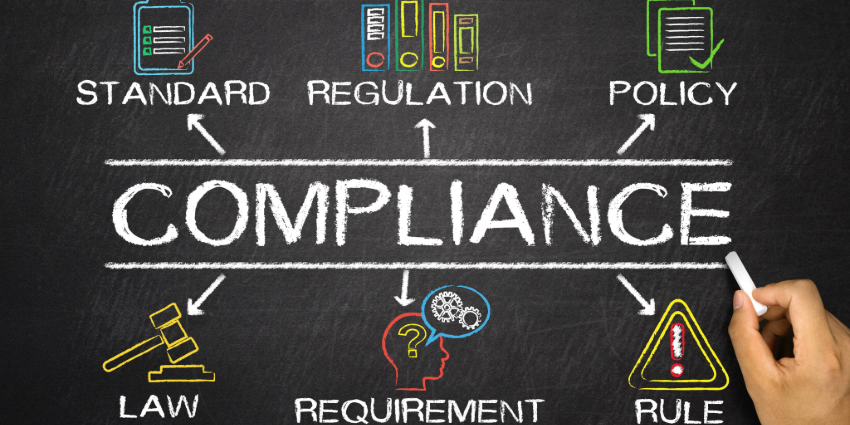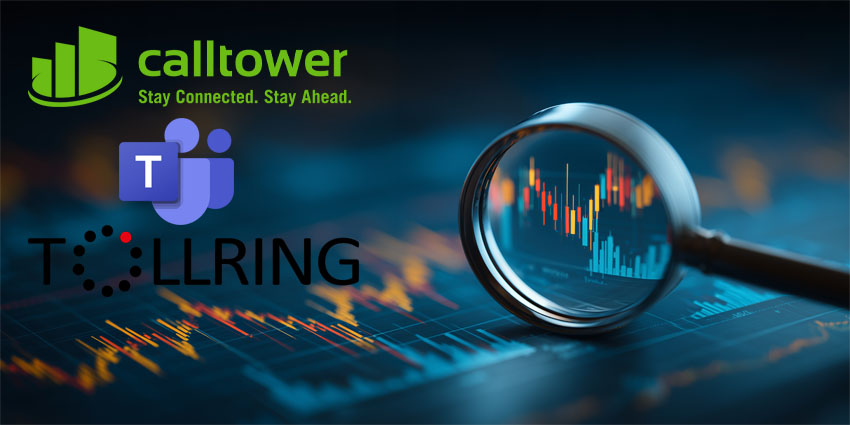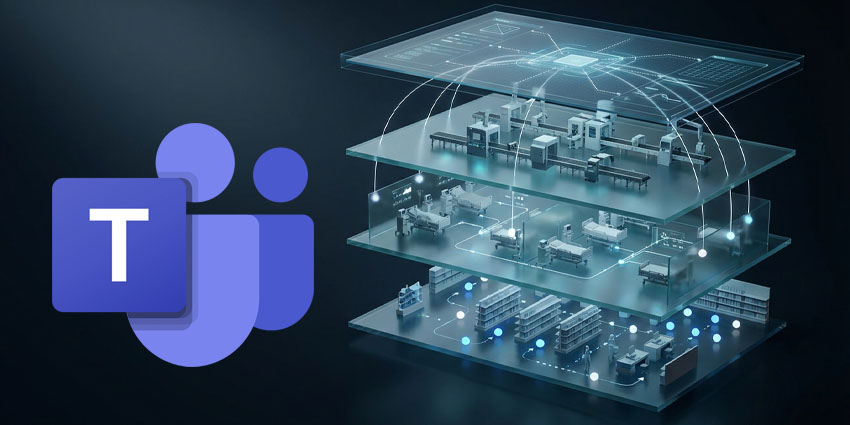When most companies start exploring the benefits of conversational intelligence, compliance isn’t always the first thing that comes to mind. They’re looking for ways to enhance training, improve company culture, upgrade customer service, or strengthen sales.
But prioritizing compliance is becoming increasingly essential, particularly as companies begin to collect larger volumes of data across platforms. Think of all the information you’re capturing every day; Slack chats, recorded calls, support tickets, CRM notes, the works.
In sectors like finance, healthcare, and law, every conversation is a mine of valuable insights, but it’s also a window to compliance risks. CI tools empower companies to interpret discussions, flag issues, and de-escalate problems instantly.
They know when a rep forgets to issue a HIPAA disclaimer, recognize the nervous tone in a KYC check, and flag phrases that might trigger legal exposure, all while the conversation is still happening. We’re no longer just recording what was said. We’re decoding what was said, what was meant, and where the risks exist.
- Conversational Intelligence Enterprise Guide: The Key to Stronger Decision Making
- Conversational Intelligence: Why CI is Crucial to your 2025 UC Strategy
Conversational Intelligence: Compliance Benefits
You’re probably already familiar with conversational intelligence – the tools that let you use AI to monitor, analyze, and understand every crucial enterprise discussion. But these tools aren’t just there to detect patterns in customer sentiment or identify sales opportunities. They can also help ensure regulatory integrity across communication channels.
With conversational intelligence, compliance teams benefit from tools that can:
- Flag when a financial advisor makes a time-bound guarantee that violates FINRA guidelines.
- Recognize when a healthcare consultant omits a key consent phrase in a telehealth session, prompting a mid-call correction.
- Capture frustration building in a legal client’s voice during a case consultation, well before an escalation hits the inbox.
Here’s what conversational intelligence really does for compliance:
Shifting from Post-Call Auditing to Real-time Monitoring
Traditional compliance auditing is like watching the replay after the game’s over. You can see who messed up, but you can’t change the score. Real-time monitoring with conversational intelligence allows companies to coach teams from the sidelines while the play is unfolding.
CI tools like Gong, Dubber, and Chorus, and even the AI tools built into Zoom, Webex, and Microsoft Teams, listen to every call live. They catch the exact moment when a rep promises “guaranteed returns” in an investment conversation. They detect the missing GDPR consent line in a client onboarding call. Then, they trigger an immediate alert, a coaching nudge, or even a compliance workflow escalation immediately.
Some tools even let compliance teams build custom libraries of high-risk terms, track speaker tone over time, and detect repeated violations across regions, teams, or individuals.
Post-call audits still matter, especially for regulatory documentation and historical analysis, but they’re no longer the only line of defense. Not when you can capture every issue instantly.
Conversational Intelligence Compliance: Audit Trails
If there’s one thing auditors and compliance teams love, it’s proof. Audit trails, timestamped logs, and immutable records that show exactly what was said, when it was said, and how it was handled.
This is where conversational intelligence compliance solutions really start making a difference. Tools like AssemblyAI and Dubber are now offering tamper-proof, AI-enriched transcripts, automatically tied to speaker identity, emotion shifts, and keyword tags.
Imagine a HIPAA investigation kicks off, and your compliance officer needs to review every patient consult over the last 90 days that mentioned “billing error” or “insurance rejection.” In a traditional setup, that’s weeks of manual search through voice files. With CI, you’re dealing with a few clicks.
Then there’s discoverability. In legal contexts, discovery often hinges on proving intent or consent. Having AI-generated transcripts, layered with context (not just text), makes it exponentially easier for legal teams to defend or dispute claims. This level of clarity also builds trust with clients, regulators, and your own teams.
Pattern Recognition: Surfacing Risks Before They Escalate
Single red flags are helpful, but patterns can help guide companies safely into the future. One of the most powerful (and often overlooked) benefits of conversational intelligence compliance is its ability to detect subtle, repeated behaviors across hundreds.
These tools don’t just flag a rogue rep once. They notice when a team keeps skipping disclosures. They pick up on a region where sentiment dips during onboarding. They see themes that people might miss entirely in manual reviews.
Let’s say your CI platform notices that in 38 percent of client calls last month, advisors in your Northeast office used vague language when discussing risk exposure. That’s not just a compliance risk; it’s a clear training gap waiting to turn into a headline.
Or maybe your legal team finds that customer confusion around terms and conditions spikes right after a new product launch. A quick transcript audit shows that reps are interpreting policy inconsistently. CI catches this, clusters it, and sends an alert before the next complaint hits.
Pattern recognition also supports policy refinement. You don’t just catch bad calls; you learn from them. If your “risk phrase” library isn’t picking up enough nuance, the system shows you where it’s falling short. If your training script isn’t being followed, CI tells you why and by whom.
Conversational Intelligence Compliance: Industry Examples
Let’s get specific. Conversational intelligence compliance benefits are becoming increasingly critical for every team, but in some industries, they’re particularly valuable:
- Finance: Financial services don’t operate in the gray. They run on clear disclosures, recorded intent, and solid documentation. Take Carvana, for example. By building a Microsoft-powered AI platform that analyzes millions of customer interactions, they’ve gained real-time visibility into compliance risks, deal friction, and tone escalation, especially crucial in auto finance contexts where regulations vary by state.
- Healthcare: Nowhere is privacy more sacred than in healthcare. One missed disclosure, or even a poorly phrased explanation, can trigger a compliance nightmare. Which is why providers like Auckland Eye turned to Dialpad’s AI features to streamline documentation and reduce risk. Instead of relying on doctors or support staff to take detailed notes, CI tools capture entire consults, flag missed explanations, and generate summaries that can be safely stored or reviewed for accuracy.
- Legal: Nuance is everything in the legal field. A single phrase, “I assumed we had a deal,” for example, can become a key part of a contract dispute. That’s why firms are embedding CI in both internal and external conversations. These tools help lawyers flag risky or compromising statements, build searchable transcript libraries, and avoid serious losses.
Conversational Intelligence Compliance Challenges
Realistically, AI-powered tools in all their forms have risks. The same power that makes conversational intelligence solutions so transformative also introduces serious threats, especially around data protection, surveillance optics, and AI bias.
That’s why it’s so important to have the right strategy. Start with data governance. These platforms handle incredibly sensitive material: recorded voice, personal health information, financial disclosures, and legal advice. You’re asking for trouble if your CI stack doesn’t offer end-to-end encryption, access controls, and region-specific storage.
Next, think about ethics. When employees hear that their calls, meetings, and Slack messages are being analyzed by AI, the immediate fear is surveillance. Trust is fragile, and rolling out CI without transparency is the fastest way to shatter it. Frame your technology as a support solution, not a supervisor. There’s also the risk of AI bias to consider.
Sentiment models might misinterpret sarcasm, speech detection might struggle with certain accents, and emotion tracking can miss cultural nuance. If your model was trained on narrow or skewed datasets, your compliance decisions could be, too, so focus on ongoing optimization.
Vet your vendors. Ask how their models are trained. Demand transparency in decision logic. Consider third-party audits of your CI pipelines.
CI as a Strategic Compliance Enabler
For today’s companies, compliance isn’t just about staying out of trouble. It’s about earning trust, showing stakeholders that you’re operating with clarity and control, and using data safely.
Conversational intelligence tools are excellent at going beyond catching problems. They help organizations actually prevent issues from happening, with a live, searchable, and auditable map of every crucial conversation.
So if you’re in finance, healthcare, legal, insurance, or any space where compliance is more than a formality, it’s time to treat conversation data as the strategic asset it is. Run a pilot. Build a custom keyword library. See how fast you surface risks, boost confidence, and streamline audits.







